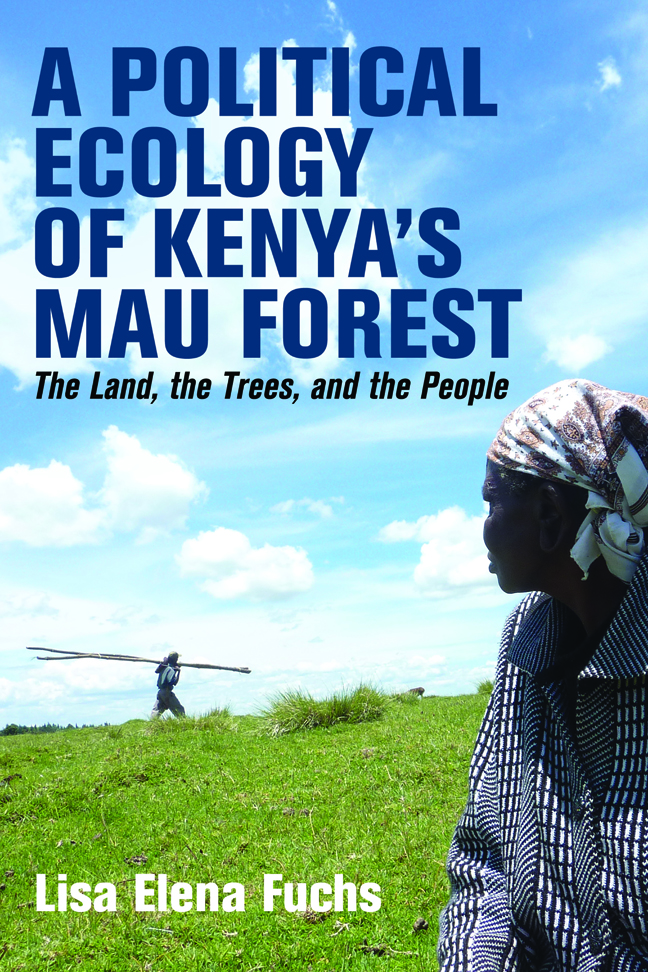Book contents
- Frontmatter
- Dedication
- Contents
- List of Illustrations
- List of Abbreviations
- Glossary
- Acknowledgements
- Introduction
- 1 The Politics of Conservation Aid: The Development State and ‘Saving the Mau’
- 2 Institutional Failure or Setting Priorities? The Continuation in Exploitation-focused Forest Management
- 3 The Political Economy of Land: Maintaining Control over Forest Land Allocation and Distribution
- 4 The Politics of Belonging and Exclusion in Response to Changes in the Eastern Mau: The Complex Definition of Legitimate Land and Resource Use
- Conclusions
- Appendix 1 Medicinal plants used and inventoried by survey respondents in the Eastern Mau in 2012–2013
- Appendix 2 Full overview of interview partners
- Bibliography
- Index
- Eastern Africa Series
1 - The Politics of Conservation Aid: The Development State and ‘Saving the Mau’
Published online by Cambridge University Press: 10 January 2024
- Frontmatter
- Dedication
- Contents
- List of Illustrations
- List of Abbreviations
- Glossary
- Acknowledgements
- Introduction
- 1 The Politics of Conservation Aid: The Development State and ‘Saving the Mau’
- 2 Institutional Failure or Setting Priorities? The Continuation in Exploitation-focused Forest Management
- 3 The Political Economy of Land: Maintaining Control over Forest Land Allocation and Distribution
- 4 The Politics of Belonging and Exclusion in Response to Changes in the Eastern Mau: The Complex Definition of Legitimate Land and Resource Use
- Conclusions
- Appendix 1 Medicinal plants used and inventoried by survey respondents in the Eastern Mau in 2012–2013
- Appendix 2 Full overview of interview partners
- Bibliography
- Index
- Eastern Africa Series
Summary
The initiative to ‘Save the Mau’ brought various conservation aid actors to the Mau Forest, both governmental and non-governmental. The initiative can be understood in the context of a global rise in green governmentality, which included various international environmental agreements, including the 1992 Convention on Biological Diversity (CBD), the 1973 Convention on the International Trade in Endangered Species of Wild Flora and Fauna (CITES), the 1979 Convention on the Conservation of Migratory Species of Wild Animals (CMS), the 1994 Convention to Combat Desertification (CCD), the 1992 Framework Convention on Climate Change (UNFCCC), Agenda 21, the 1994 International Tropical Timber Agreement (ITTA), the 1997 Kyoto Protocol, the 1987 Montreal Protocol on Substances that Deplete the Ozone Layer, the 1971 Ramsar Convention on Wetlands of International Importance, alongside many others (Bongers & Tennigkeit, 2010; Johnson, 1976; Meyer et al., 1997; Okidi, 2008; Okidi et al., 2008). Conservation aid to Kenya progressively increased, which bore significant conservation efforts, including for the Mau Forest. Some of the conservation activities implemented were directly related to the Mau Forest Rehabilitation Programme. While NGOs had previously engaged with forest-dwelling and adjacent communities, these interactions were primarily focused on land rather than environmental issues. With the branding of the ‘Mau crisis’ as an environmental crisis, the politics of conservation aid arrived in the Mau Forest.
The politicised environment: Environmental conservation and management concepts and practice
In Kenya, forest management and conservation are embedded in and influenced by the broader environmental conservation, land use, and land-management history. Contemporary forest conservation policies and practices are a legacy of general environmental management policies and should be understood in their historical context.
The colonial legacy in conservation narratives and practices
During the colonial period, environmental stress was explained by a ‘single story’, a kind of ‘master narrative’. This colonial legacy defined the trajectory of environmental policy and practice in Kenya, which influenced the multiple attempts and failed approaches to conserving the country's spectacular environments.
Institutionalised and centralised environmental management in Kenya, as in most African countries, was established under the colonial governments in the early 20th century. Most of these governments organised natural resource management in four branches, dividing wildlife, forestry, fisheries, and agriculture in pursuit of ‘governmen-tality’ (Foucault, 1991), which demanded rational forms of management of resources and populations through administrative apparatuses of the state, based on expert knowledge (Escobar, 1999).
- Type
- Chapter
- Information
- A Political Ecology of Kenya's Mau ForestThe Land, the Trees, and the People, pp. 41 - 114Publisher: Boydell & BrewerPrint publication year: 2023

